Trailer Outriggers
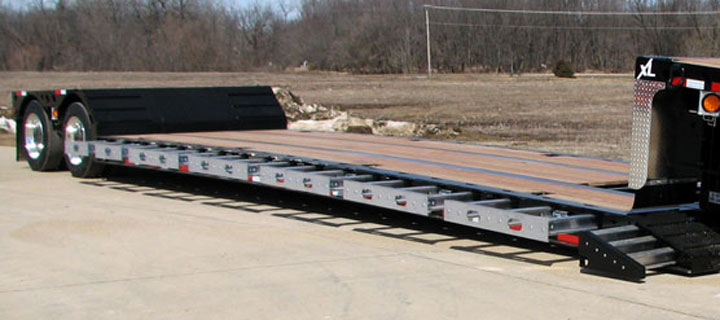
Trailer outriggers are a useful feature for large equipment that have a wide separation between the wheels or tracks depending on the equipment.
- Pull Out
- Swing Out
- Attached
A pull out outrigger, as pictured above, does not require a board as does the swing outs or attached outriggers. Ramps provide access for driving the vehicle right onto the trailer outriggers. This type of system provides for a more stable loading as you don't experience movement on the board.
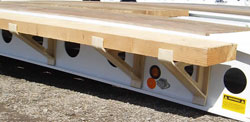
An outrigger board lays on top of swing out or attached outriggers. The left image shows a board on attached outriggers. The end of the board has the potential to "flip up" once a wheel begins to travel on the board. Precautions should be taken to avoid "board flip".
A trailer with outriggers is generally 96" or 102" wide. A 96" trailer is generally used more with agricultural equipment hauling. The outriggers can then be used to increase the trailer width to support as we mentioned earlier larger pieces of equipment that need a wider base or wider trailer. Another advantage to pull out outriggers like the kind shown below is that they can extend allowing a 13'6" wide trailer base. Whereas swing out outriggers might only add around 10" additional trailer width to each side.
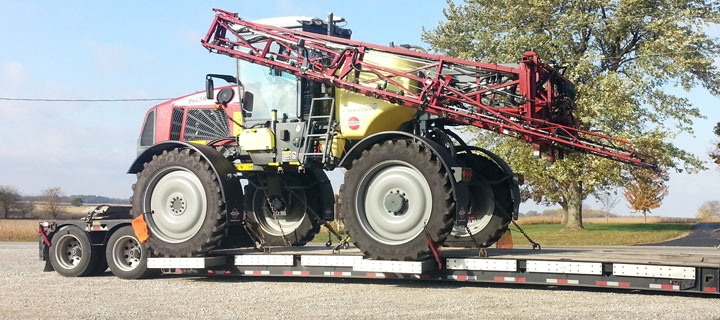
Pull Out Outrigger
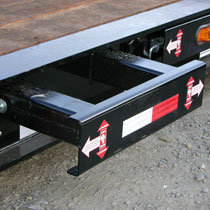
Attached Outrigger
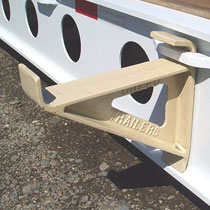
Swing Out Outrigger
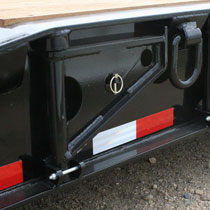
I mentioned "board flip", but boards can also brake or bust and so pull out's that don't use a board have that advantage. A board can bust easier depending on the spacing of the outriggers as well. Typically you will find spacing between outrigger supports every 12" to 22".
Thank you and I hope you know more about trailer outriggers.
We Love Heavy Haul Trucking!
 My name is Travis Smith and I’ve been working in the trucking business since 1994 and with Heavy Haul Trucking since 2001. Our office knows about oversize, heavy and specialty loads and how to get your load exactly where you need it, safely and on time.
I enjoy writing about Heavy Haul and if your interested in learning more, please sign up for our free newsletter. If you need a shipping quote, just call (417) 312-2920 or visit our Free Freight Quote page for more details. Google+
My name is Travis Smith and I’ve been working in the trucking business since 1994 and with Heavy Haul Trucking since 2001. Our office knows about oversize, heavy and specialty loads and how to get your load exactly where you need it, safely and on time.
I enjoy writing about Heavy Haul and if your interested in learning more, please sign up for our free newsletter. If you need a shipping quote, just call (417) 312-2920 or visit our Free Freight Quote page for more details. Google+

